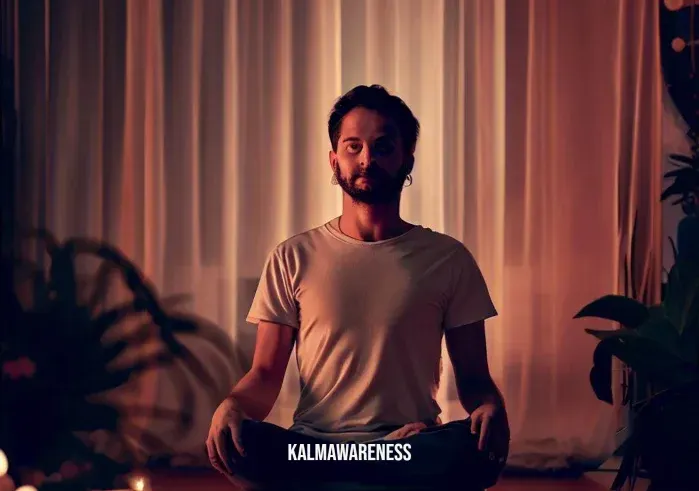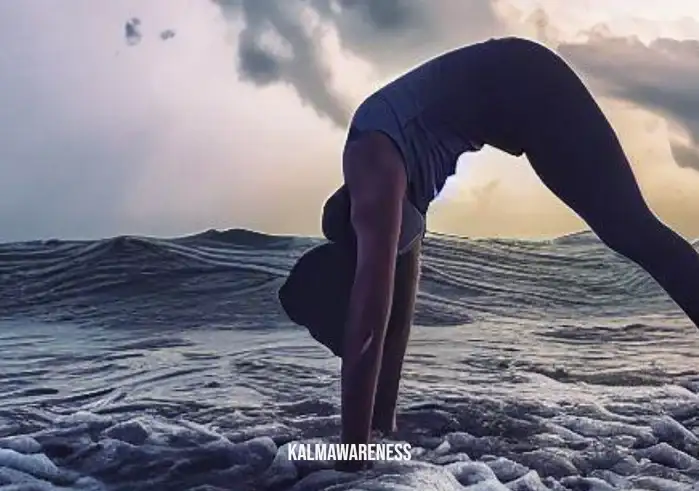Yoga Wheel Pose: Open Your Heart and Expand Your Horizons
| Description | Explanation |
|---|---|
| Pose Name | Yoga Wheel Pose |
| Original Name | Chakrasana |
| Difficulty Level | Intermediate |
| Pose Category | Backbend |
| Exercise Duration | For beginners: Start with 15-30 seconds and gradually increase. For advanced practitioners: Aim for 1-2 minutes. |
Introduction
Welcome to the world of Yoga and the invigorating Yoga Wheel Pose, also known as Chakrasana. If you’re looking to deepen your practice and experience the joy of opening your heart, this pose is the perfect choice for you. In this article, we will explore the intricacies of the Yoga Wheel Pose, step by step, and uncover its numerous benefits.
Unveiling the Yoga Wheel Pose
The Yoga Wheel Pose, with its graceful arch and deep backbend, resembles a wheel in its shape, hence the name. This pose is an excellent way to stretch and strengthen various parts of your body, providing an array of physical and mental advantages.
Benefits of Yoga Wheel Pose
- Spine Flexibility: As you arch your back over the wheel, your spine gets a deep and invigorating stretch. This can improve flexibility and alleviate back pain.
- Strengthening Core Muscles: Holding the pose engages your core muscles, helping to tone and strengthen them over time.
- Open Heart and Shoulders: Yoga Wheel Pose expands your chest and shoulders, creating a sense of openness and reducing tension.
- Energy Flow: Practicing Chakrasana stimulates the energy centers in your body, promoting a harmonious flow of energy.
- Improved Posture: Regular practice of this pose can contribute to better posture and alignment.
How to Practice Yoga Wheel Pose: Step by Step
- Preparation: Warm up your body with a few gentle stretches and backbends. It’s crucial to ensure your body is ready for the deeper stretch of the Yoga Wheel Pose.
- Placement: Sit on the mat with your knees bent and your feet hip-distance apart. Place the Yoga Wheel behind you, perpendicular to your body.
- Hand Position: Position your hands behind your shoulders, with your fingers pointing toward your feet. Your palms should be placed on the wheel, shoulder-width apart.
- Lift and Arch: Press your hands firmly into the wheel and lift your hips off the mat, arching your back over the wheel. Let your head hang gently backward.
- Leg Alignment: Keep your knees and feet parallel throughout the pose. To deepen the stretch, you can experiment with different leg positions.
- Hold and Breathe: As you find your balance, take slow and deep breaths. Relax your neck and allow your chest to expand fully.
- Release: Gently lower your hips back to the mat and bring your spine to a neutral position.
Duration of Practice
For beginners, start by holding the pose for 15-30 seconds. Over time, gradually increase the duration as your body becomes more comfortable with the stretch. Advanced practitioners can aim to hold the pose for 1-2 minutes, experiencing the full benefits of this beautiful backbend.

Unraveling the Wonders of Yoga Wheel Pose
In this exciting continuation of our Yoga Wheel Pose journey, we will dive deeper into the plethora of benefits this pose offers, understand who should approach it with caution, and explore variations suitable for practitioners of all levels. So, let’s roll into the wonders of the Yoga Wheel Pose!
Benefits of Yoga Wheel Pose
- Stimulates the Nervous System: The deep arching of the back stimulates the nerves along the spine, invigorating the nervous system and promoting overall vitality.
- Enhances Flexibility: With regular practice, the Yoga Wheel Pose can significantly improve the flexibility of your spine, shoulders, and hip flexors.
- Strengthens Muscles: This pose engages various muscles, including the back, core, and arms, helping to build strength and stability.
- Uplifts Mood: As a heart-opening posture, the Yoga Wheel Pose can bring about feelings of joy and positivity, reducing stress and anxiety.
- Improves Digestion: The gentle massage of the abdominal organs in this pose aids in better digestion and helps alleviate digestive issues.
Caution: Who Should Avoid Yoga Wheel Pose?
While the Yoga Wheel Pose offers a myriad of benefits, it may not be suitable for everyone. Exercise caution and refrain from practicing this pose if you fall into any of the following categories:
- Back Injuries: If you have a current or chronic back injury, it’s best to avoid this pose, as the deep backbend can exacerbate the condition.
- Shoulder Issues: Individuals with shoulder injuries or instability should avoid putting excessive pressure on their shoulders in this pose.
- Pregnancy: Pregnant women should refrain from practicing the Yoga Wheel Pose, especially in later stages, to avoid undue pressure on the abdomen.
- High Blood Pressure: As this pose can elevate the heart rate, those with uncontrolled high blood pressure should avoid it.
Variations of Yoga Wheel Pose for All Levels
- Beginner Variation – Supported Bridge: For beginners or those with limited flexibility, a supported bridge can be an excellent alternative. Place a yoga block or bolster under your sacrum and gently lift your hips to experience a milder backbend.
- Intermediate Variation – Rolling Back and Forth: Once you are comfortable in the basic pose, you can try rolling the wheel forward and backward, massaging your spine and exploring a more dynamic stretch.
- Advanced Variation – One-Legged Chakrasana: Challenge your balance and strength by lifting one leg off the ground while holding the pose. This variation adds an extra element of difficulty to the Yoga Wheel Pose.
- Yoga Wheel Plank: Transition into a plank position with your feet on the Yoga Wheel and hands on the floor. Engage your core and hold the position for a challenging full-body workout.
- Yoga Wheel Chest Opener: Sit on the Yoga Wheel and gently roll backward, arching your back over the wheel. This variation provides a gentle chest opening stretch.
A Fusion of Strength and Grace
As you venture into the world of Yoga Wheel Pose, you’ll discover the beauty of this backbend that seamlessly blends strength and grace. Embrace the unfolding journey as you refine your practice and explore new dimensions of flexibility and resilience.

Unveiling the Spirituality and Mystique of Yoga Wheel Pose
In this profound exploration of the Yoga Wheel Pose, we will journey into its rich history, delve into the spiritual significance it holds, and uncover valuable tips to enhance your practice. Additionally, we’ll shed light on common mistakes to avoid and explore modifications for those with injuries or limited flexibility. Let’s embark on a spiritual quest with the Yoga Wheel Pose!
The Fascinating History of Yoga Wheel Pose
The roots of the Yoga Wheel Pose can be traced back to the ancient practice of Yoga. While it may not have a specific name in classical texts, its essence can be found in various backbend poses practiced in Hatha Yoga. In recent times, the invention of the yoga wheel as a prop brought this beautiful and versatile pose into the modern Yoga landscape.
Embracing the Spiritual Significance
The Yoga Wheel Pose holds spiritual significance that goes beyond the physical realm. As you arch your back and open your heart, this pose is believed to activate the heart chakra (Anahata), the energy center associated with love, compassion, and emotional balance. Practicing this pose can help you tap into your inner well of love and kindness, fostering a sense of connectedness with yourself and others.
Tips for Deepening Your Yoga Wheel Pose
- Warm-Up Thoroughly: Ensure your body is adequately warmed up before attempting the Yoga Wheel Pose to prevent injuries and enhance flexibility.
- Engage Your Core: As you lift into the pose, engage your core muscles to support your backbend and maintain stability.
- Breathe Mindfully: Take slow and deep breaths while in the pose, allowing your breath to guide your movements and promote relaxation.
- Focus on Alignment: Pay attention to the alignment of your spine and limbs to avoid strain and achieve an even stretch.
- Practice Regularly: Consistent practice is key to progress in the Yoga Wheel Pose. Include it in your regular Yoga routine for best results.
Common Mistakes to Avoid
- Overarching the Lower Back: Avoid excessive arching in the lower back, which can lead to discomfort and strain.
- Rounding the Shoulders: Keep your shoulders away from your ears and open your chest fully to experience the full benefits of the pose.
- Pushing Too Hard: While it’s essential to challenge yourself, pushing too hard into the pose can cause injury. Listen to your body and practice with mindfulness.
Modifications for Injury or Limited Flexibility
If you have specific injuries or limited flexibility, fear not, as there are variations and modifications available:
- Use Props: Place a cushion or yoga block under your back to provide additional support and reduce the depth of the backbend.
- Wall Support: Practice the pose with your yoga wheel against a wall for added stability and confidence.
- Bridge Pose: Opt for a classic bridge pose as a gentler alternative to the Yoga Wheel Pose.
Complementary Poses to Enhance Your Practice
- Child’s Pose (Balasana): Counterbalance the backbend with a calming and gentle forward bend, stretching the spine in the opposite direction.
- Cobra Pose (Bhujangasana): Practice Cobra Pose to further open your heart and prepare your back for deeper backbends.
- Camel Pose (Ustrasana): Explore the heart-opening benefits of Camel Pose, which complements the Yoga Wheel Pose beautifully.
Embrace the Journey
As you integrate the spiritual and physical aspects of the Yoga Wheel Pose into your practice, remember that Yoga is a journey of self-discovery and transformation. Embrace the process with an open heart and a willingness to explore the depths of your being.
Conclusion
The Yoga Wheel Pose transcends the boundaries of a physical asana, inviting you to embark on a holistic journey of mind, body, and spirit. Honor the history, connect with the spirituality, and bring mindfulness to each practice, allowing the profound essence of the pose to unfold within you.
In the final part of this article, we will summarize our enlightening Yoga Wheel Pose experience and offer parting wisdom to carry on your Yoga journey.




